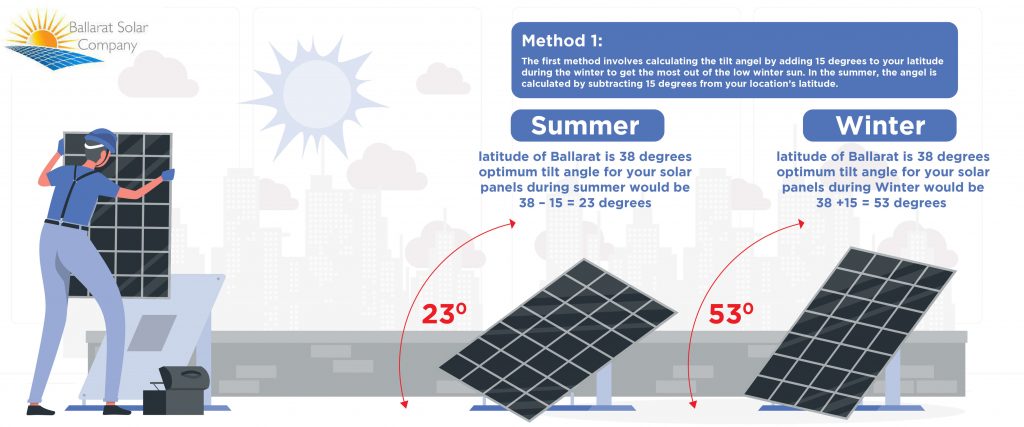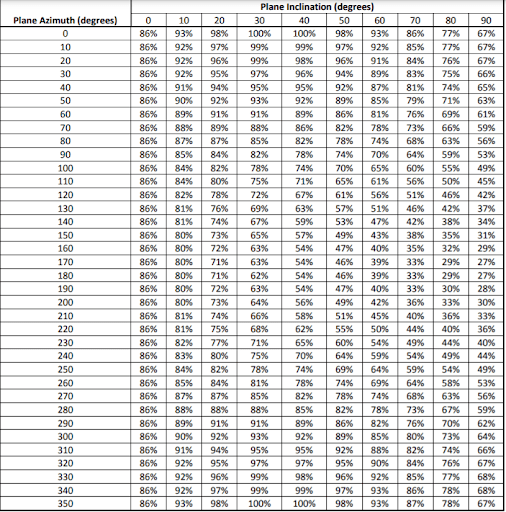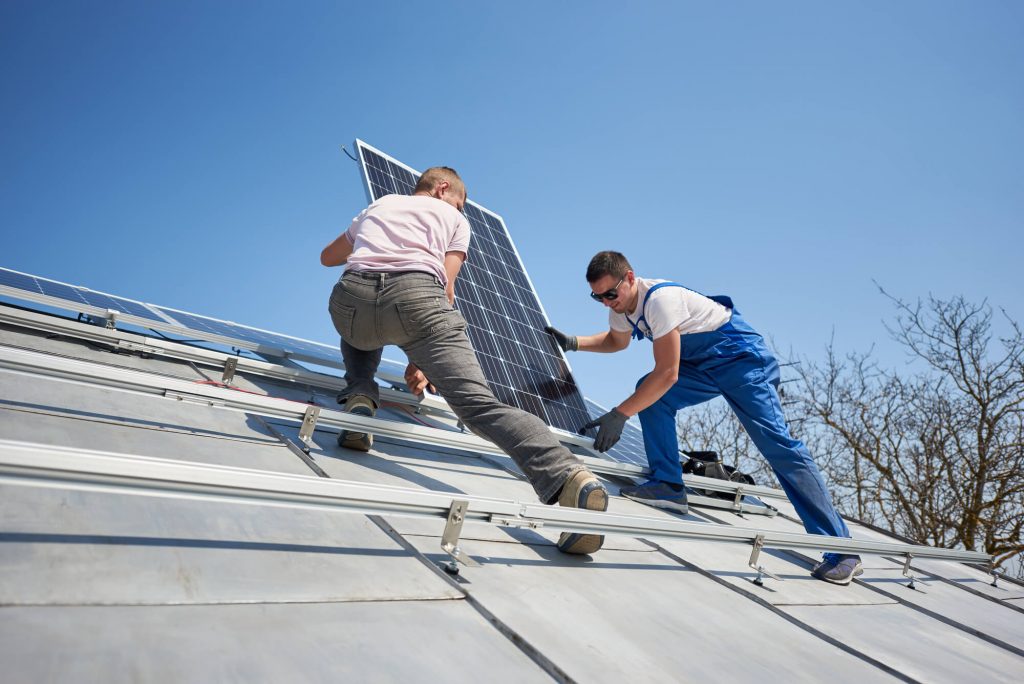Table of Contents
What is the best angle for a solar panel?
The angle at which your solar panel installation is done can make a difference in the amount of energy your panels generate to power up your home.
However, the ideal angle is never fixed since the sun keeps on moving across the sky and the angle at which it shines down on your panels could be low or high depending upon the time of the day as well as the on-going season.
Hence, to get the maximum sunlight exposure for your solar panels, the ideal solar panel angle needs to be equal to the latitude angle of your location, with the panels mounted at the same angle as the roof.
For solar panel installation in Ballarat, the ideal panel angle is around 38 degrees. A slight variation from this generally has negligible effect on the amount of sunlight absorbed by the panels.
It is worthy to note that the angle of your solar panels might need to be tilted a little more in the winter when the sun is low as compared to the warmer days.
How to calculate the tilt angle of a solar panel?
Generally, there are two methods to calculate the optimum solar panel angle for your solar installation.
Method 1:

The first method involves calculating the tilt angle by adding 15 degrees to your latitude during the winter to get the most out of the low winter sun. In the summer, the angle is calculated by subtracting 15 degrees from your location’s latitude.
So, for example, if the latitude of Ballarat is 38 degrees the optimum tilt angle for your solar panels during summer would be 38 – 15 = 23 degrees while in winter it would be 38 +15 = 53 degrees.
Method 2:

The second method is calculated by multiplying the latitude angel by 0.9 and then adding 29 degrees to it to make the most out of the winter sun.
(0.9 x 38) + 29 = 63 degrees. This angle is about 10 degrees steeper than the one we got using Method 1, but does a very good job at capturing the maximum sunlight in the short winter days.
For summer, you need to subtract 23.5 from (0.9 x 38) which equals to around 11 degrees.
Pros and cons of each direction and angle
When the solar panels are not placed in the right direction or angle, there can be significant output loss.
The only pros and cons related to the angle of solar panels are related to the amount of sun exposure each one has.
Solar output loss on flat rooftops vs tilted rooftops:
According to Clean Energy Council the percentage of output for a combination of orientation and angels for solar panel installation in Melbourne is shown in the table below:

Source: Clean Energy Council
As evident from the table the flatter the rooftop, the greater the energy loss.
What is the ideal location for solar panels?
Solar panels work best when directly facing the sun.
Since Australia is in the Southern Hemisphere, the sun tends to move towards the North. In order to get the maximum sunlight exposure, the solar panels need to be placed north-facing.
Panels placed in any other location might result in 10 – 20% output loss.
Why can't solar panels be kept parallel to the ground?
Solar panels are most productive when they are positioned perpendicular to the sun’s rays falling upon them. Placing them parallel to the ground would significantly reduce their output.
How far can solar panels be from a house?
Solar panels cannot be placed more than 500 feet away from where the energy use needs to take place, in this instance, your house.
The farther they are placed from the house, the more expensive solar panel installation will get, as this will require long wiring which is not only costly but may also result in energy loss from the overall system.
Generally, 20 – 30 feet is the ideal distance from the solar panels to the solar battery, as it reduces the energy loss in transport.
Will rotating solar panels increase output?
A new concept in the solar industry is that of rotating solar panels. Since the earth is constantly rotating around the sun, thereby changing the sun’s position relative to the earth, the amount of sunlight that falls on your panels also varies throughout the day.
Rotating solar panels can increase efficiency. This can be done manually or through a solar tracker which allows your solar panels to track the sun’s path in the sky, capture the maximum amount of sunlight during the various times of the day and hence produce more solar power.
However, solar trackers can come with a heavy price tag and can significantly add up to your overall solar panel installation cost.
Solar tracker for a single panel ranging around $500. Hence, in most cases, it makes more financial sense to simply add more panels to your overall solar installation than add solar trackers to your individual panels.
Wrapping up
The solar drive is spreading far and wide across the country, with a number of government initiatives in terms of rebates being rolled out for home owners as well as businesses.
However, it’s important to have a thorough knowledge about your solar system, before you even get started.
We hope this article on the best solar panel direction, angle and location will help ensure you get the best output of your next solar panel installation.
If you are looking for solar installers near me, we are licensed and Clean Energy Council accredited solar installers in Ballarat and can help guide you through your next solar installation.


